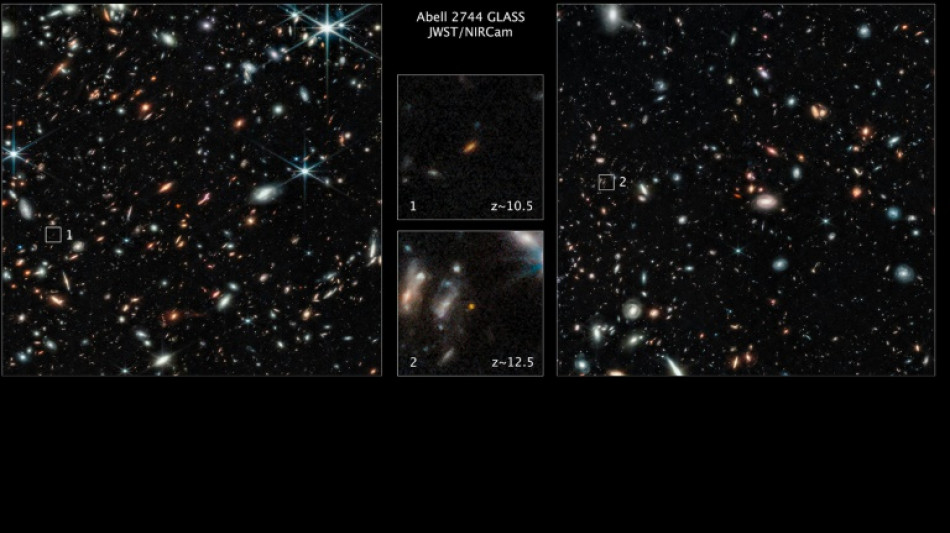
-
 Kasatkina ends WTA season early after hitting 'breaking point'
Kasatkina ends WTA season early after hitting 'breaking point'
-
Paris stocks drop as French PM resigns

-
 Death toll from Indonesia school collapse rises to 63
Death toll from Indonesia school collapse rises to 63
-
Medicine Nobel to trio who identified immune system's 'security guards'
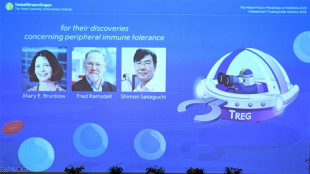
-
 UN rights council launches probe into violations in Afghanistan
UN rights council launches probe into violations in Afghanistan
-
UK author Jilly Cooper dies aged 88

-
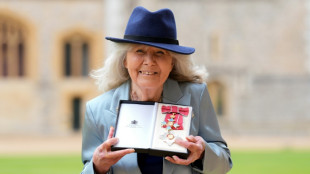 Jilly Cooper: Britain's queen of the 'bonkbuster' novel
Jilly Cooper: Britain's queen of the 'bonkbuster' novel
-
Streaming stars' Le Mans race scores Twitch viewer record

-
 England rugby star Moody 'shocked' by motor neurone disease diagnosis
England rugby star Moody 'shocked' by motor neurone disease diagnosis
-
Leopard captured after wandering into Indonesian hotel

-
 Israel, Hamas due in Egypt for ceasefire talks
Israel, Hamas due in Egypt for ceasefire talks
-
Rescuers scramble to deliver aid after deadly Nepal, India floods

-
 Tokyo stocks soar on Takaichi win, Paris sinks as French PM resigns
Tokyo stocks soar on Takaichi win, Paris sinks as French PM resigns
-
OpenAI offers more copyright control for Sora 2 videos

-
 Australia prosecutors appeal 'inadequate' sentence for mushroom murderer: media
Australia prosecutors appeal 'inadequate' sentence for mushroom murderer: media
-
Rugby World Cup-winning England star Moody has motor neurone disease

-
 Trump says White House to host UFC fight on his 80th birthday
Trump says White House to host UFC fight on his 80th birthday
-
Vast reserves, but little to drink: Tajikistan's water struggles

-
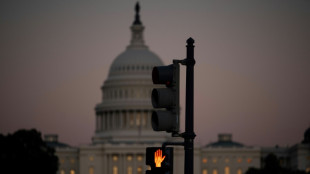 US government shutdown may last weeks, analysts warn
US government shutdown may last weeks, analysts warn
-
Arsenal host Lyon to start new Women's Champions League format

-
 Gloves off, Red run, vested interests: Singapore GP talking points
Gloves off, Red run, vested interests: Singapore GP talking points
-
Bills, Eagles lose unbeaten records in day of upsets

-
 Muller on target as Vancouver thrash San Jose to go joint top
Muller on target as Vancouver thrash San Jose to go joint top
-
Tokyo soars, yen sinks after Takaichi win on mixed day for Asia

-
 China's chip challenge: the race to match US tech
China's chip challenge: the race to match US tech
-
UN rights council to decide on creating Afghanistan probe

-
 Indonesia sense World Cup chance as Asian qualifying reaches climax
Indonesia sense World Cup chance as Asian qualifying reaches climax
-
ICC to give war crimes verdict on Sudan militia chief
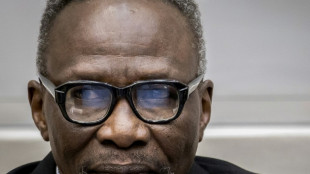
-
 Matthieu Blazy to step out as Coco's heir in Chanel debut
Matthieu Blazy to step out as Coco's heir in Chanel debut
-
Only man to appeal in Gisele Pelicot case says not a 'rapist'

-
 Appetite-regulating hormones in focus as first Nobel Prizes fall
Appetite-regulating hormones in focus as first Nobel Prizes fall
-
Gisele Pelicot: French rape survivor and global icon

-
 Negotiators due in Egypt for Gaza talks as Trump urges quick action
Negotiators due in Egypt for Gaza talks as Trump urges quick action
-
'My heart sank': Surging scams roil US job hunters
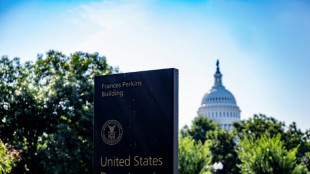
-
 Competition heats up to challenge Nvidia's AI chip dominance
Competition heats up to challenge Nvidia's AI chip dominance
-
UK police to get greater powers to restrict demos

-
 Guerrero grand slam fuels Blue Jays in 13-7 rout of Yankees
Guerrero grand slam fuels Blue Jays in 13-7 rout of Yankees
-
Five-try Bayonne stun champions Toulouse to go top in France

-
 Fisk reels in Higgo to win maiden PGA Tour title in Mississippi
Fisk reels in Higgo to win maiden PGA Tour title in Mississippi
-
Aces overpower Mercury for 2-0 lead in WNBA Finals

-
 Bayonne stun champions Toulouse to go top in France
Bayonne stun champions Toulouse to go top in France
-
Greta Thunberg among Gaza flotilla detainees to leave Israel

-
 Atletico draw at Celta Vigo after Lenglet red card
Atletico draw at Celta Vigo after Lenglet red card
-
Ethan Mbappe returns to haunt PSG as Lille force draw with Ligue 1 leaders

-
 Hojlund fires Napoli into Serie A lead as AC Milan held at Juve
Hojlund fires Napoli into Serie A lead as AC Milan held at Juve
-
Vampires, blood and dance: Bollywood horror goes mainstream
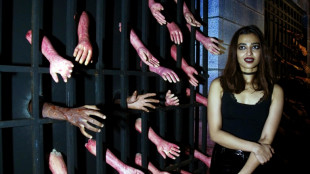
-
 Broncos rally snaps Eagles unbeaten record, Ravens slump deepens
Broncos rally snaps Eagles unbeaten record, Ravens slump deepens
-
Former NFL QB Sanchez charged after allegedly attacking truck driver

-
 France unveils new government amid political deadlock
France unveils new government amid political deadlock
-
Child's play for Haaland as Man City star strikes again


Webb observations point to a shorter cosmic dark age
The first galaxies may have formed far earlier than previously thought, according to observations from the James Webb Space Telescope that are reshaping astronomers' understanding of the early universe.
Researchers using the powerful observatory have now published papers in the journal Astrophysical Journal Letters, documenting two exceptionally bright, exceptionally distant galaxies, based on data gathered within the first few days of Webb going operational in July.
Their extreme luminosity points to two intriguing possibilities, astronomers on a NASA press call said Thursday.
The first is that these galaxies are very massive, with lots of low-mass stars like galaxies today, and had to start forming 100 million years after the Big Bang which occurred 13.8 billion years ago.
That is 100 million years earlier than the currently held end of the so-called cosmic dark age, when the universe contained only gas and dark matter.
A second possibility is that they are made up of "Population III" stars, which have never been observed but are theorized to have been made of only helium and hydrogen, before heavier elements existed.
Because these stars burned so brightly at extreme temperatures, galaxies made of them would not need to be as massive to account for the brightness seen by Webb, and could have started forming later.
"We are seeing such bright, such luminous galaxies at this early time, that we're really uncertain about what is happening here," Garth Illingworth of the University of California at Santa Cruz told reporters.
The galaxies' rapid discovery also defied expectations that Webb would need to survey a much larger volume of space to find such galaxies.
"It's sort of a bit of a surprise that there are so many that formed so early," added astrophysicist Jeyhan Kartaltepe of the Rochester Institute of Technology.
- Most distant starlight -
The two galaxies were found to have definitely existed approximately 450 and 350 million years after the Big Bang.
The second of these, called GLASS-z12, now represents the most distant starlight ever seen.
The more distant objects are from us, the longer it takes for their light to reach us, and so to gaze at the distant universe is to see into the deep past.
As these galaxies are so distant from Earth, by the time their light reaches us, it has been stretched by the expansion of the universe and shifted to the infrared region of the light spectrum.
Webb can detect infrared light at a far higher resolution than any instrument before it.
Illingworth, who co-authored the paper on GLASS-z12, told AFP disentangling the two competing hypotheses would be a "real challenge," though the Population III idea was more appealing to him, as it would not require upending existing cosmological models.
Teams are hoping to soon use Webb's powerful spectrograph instruments -- which analyze the light from objects to reveal their detailed properties -- to confirm the galaxies' distance, and better understand their composition.
The Atacama Large Millimeter/submillimeter Array (ALMA), a ground telescope in northern Chile, might also be able to help in weighing the mass of the two galaxies, which would help decide between the two hypotheses.
"JWST has opened up a new frontier, bringing us closer to understanding how it all began," summed up Tommaso Treu of the University of California at Los Angeles, principal investigator on one of the Webb programs.
F.Müller--BTB

